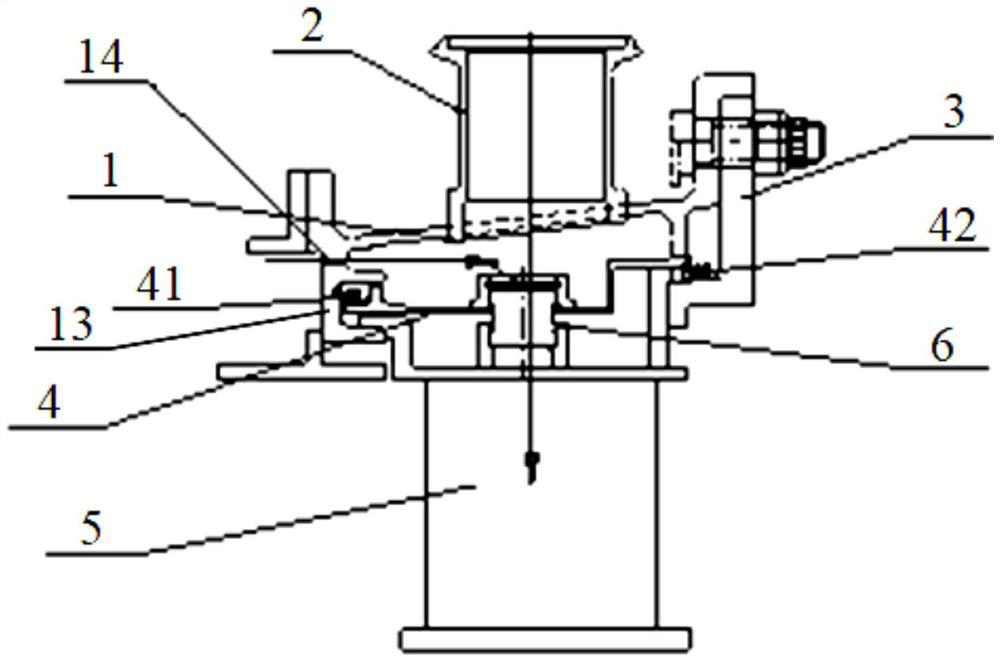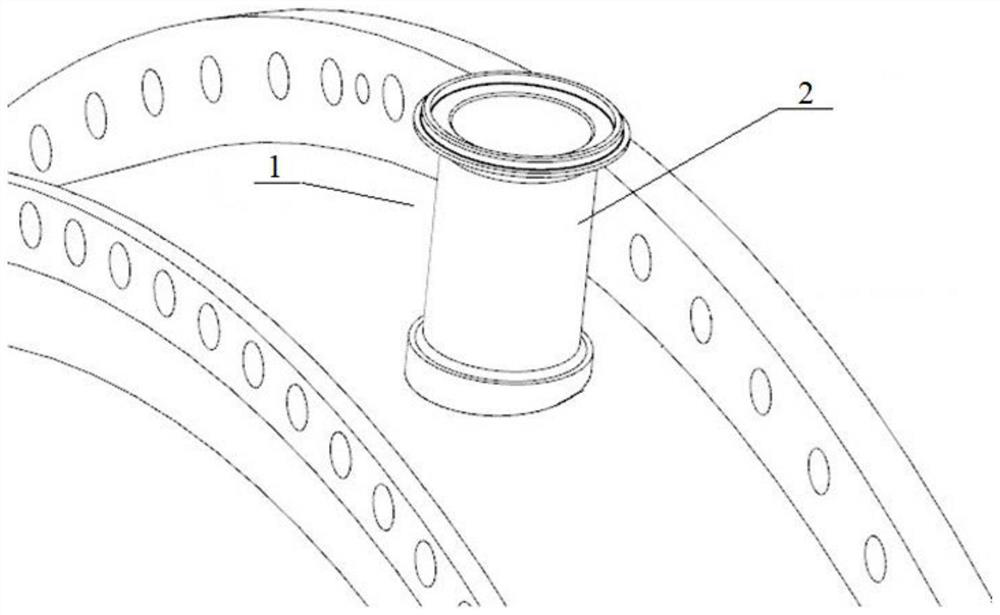Gas collection and drainage structure for cooling inner cavity of stator blade
A technology of stator blades and inner cavity is applied in the field of air collecting and drainage structures for cooling the inner cavity of stator blades, which can solve the problems of air leakage, large thermal stress of inner and outer casings, and large temperature difference between inner and outer casings, and achieves good structural coordination. Effect
- Summary
- Abstract
- Description
- Claims
- Application Information
AI Technical Summary
Problems solved by technology
Method used
Image
Examples
Embodiment Construction
[0032]In order to make the purpose, technical solutions and advantages of the implementation of this application clearer, the technical solutions in the embodiments of the present application will be described in more detail below in conjunction with the drawings in the embodiments of the present application. In the drawings, the same or similar reference numerals indicate the same or similar elements or elements with the same or similar functions. The described embodiments are part of the embodiments of the present application, rather than all of the embodiments. The embodiments described below with reference to the accompanying drawings are exemplary, and are intended to explain the application, but should not be understood as a limitation to the application. Based on the embodiments in this application, all other embodiments obtained by those of ordinary skill in the art without creative work shall fall within the protection scope of this application. The embodiments of the prese...
PUM
 Login to View More
Login to View More Abstract
Description
Claims
Application Information
 Login to View More
Login to View More - Generate Ideas
- Intellectual Property
- Life Sciences
- Materials
- Tech Scout
- Unparalleled Data Quality
- Higher Quality Content
- 60% Fewer Hallucinations
Browse by: Latest US Patents, China's latest patents, Technical Efficacy Thesaurus, Application Domain, Technology Topic, Popular Technical Reports.
© 2025 PatSnap. All rights reserved.Legal|Privacy policy|Modern Slavery Act Transparency Statement|Sitemap|About US| Contact US: help@patsnap.com



